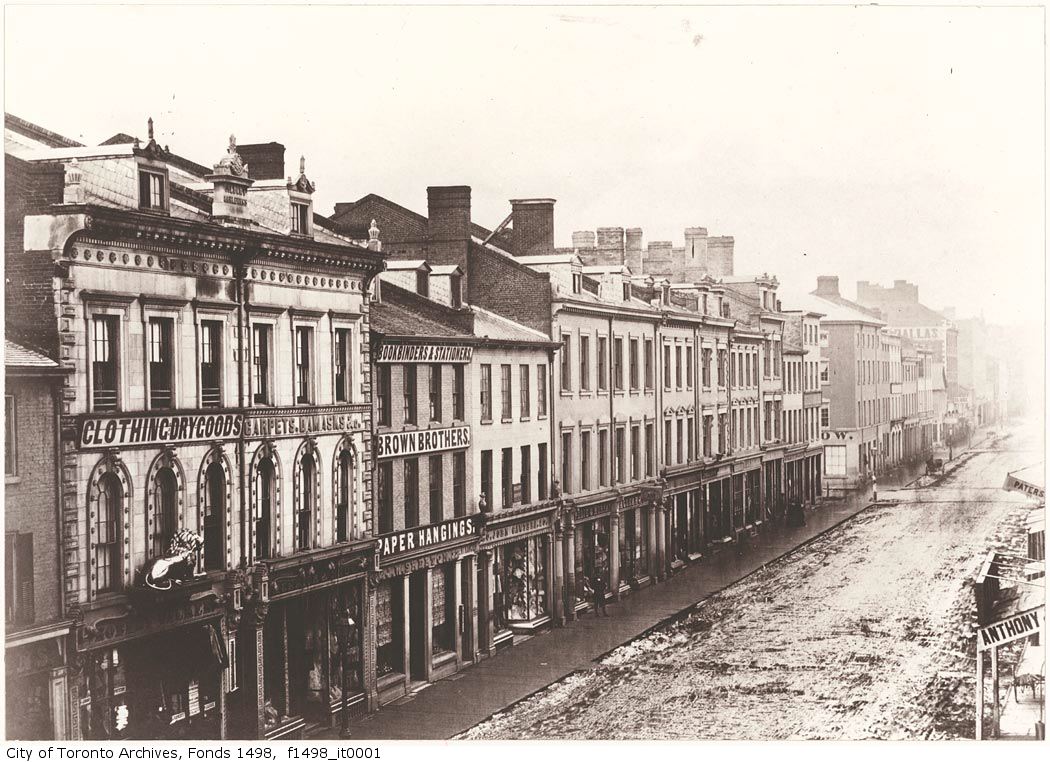The Great Recession of 2008 began with the collapse of the Lehman Brothers investment bank and the bursting of an eight trillion dollar real estate bubble. The Great Financial Panic of 1857. might have been a lesson. It began with the collapse of a bank in Ohio, railway failures and the burst of an associated real estate bubble. It all led to a three-year global depression.
A glimpse of the rise and bust of the bubble in Ontario (then called Canada West)—and the lessons that should have been learned— can be seen in items gleaned from the Toronto Daily Leader.
On August 29, 1853, the Leader reported that land prices are booming wherever railways are being built. A line being built from Peterborough is accompanied by “an enormous advance in the price of real estate.” At Hamilton, land recently “unsaleable at $6 to $8 [per acre] is now readily sold at from $14 to $20.” Small homesteads near Guelph, “which were a dead weight a couple of years ago at £200, have now realized £800 cash.” Two farms near Stratford, purchased for $4 an acre in the fall of 1856 were reportedly sold the following spring for $30 an acre, and in a few months, re-sold “at a corresponding advance over the second price.”
Even the University of Toronto cashed in on the craze. Auctioneers Wakefield, Coate & Co. appealed “To Speculators in Land,” in an ad in the Leader (January 2, 1856). The advertisement offered a large block of university land near the village of Otterville, promising “a very favourable opportunity for the formation of Village Lots.”
The end of the seemingly unending advances in real estate prices and the start of a deep recession was noted by the Leader August 1, 1857:
“Nor is it surprising, for it is evident that the natural advance occasioned by the inauguration of the railway system opened the door to speculations of a very doubtful character.” The “fairy villages” and “earthly paradises” that dotted promoters’ maps were gone, while “the original cedar swamps remain.”
Debt and ruin follow delusions of wealth
The Leader surveyed the burdens of debt that followed the delusions of wealth, in a final assessment on March 30, 1860. Thousands of speculators and their families were ruined, their homes and property lost, while debtors’ prison beckoned. The debts were so numerous, said the Leader, “That there is no prospect of a tithe of them ever being liquidated.” The report continued:
“In these years every other person thought he had found a royal road to riches. The recipe was so simple that it is astonishing it should have induced such widespread delusion; since there was hardly anybody who did not know all about it.
“The plan was to buy unproductive real estate—city, town, village or farm lots—almost wholly upon credit; to sell again at five hundred per cent profit, scrape your bags of gold together and live en grand Seigneur for the rest of your days.
“Nothing was talked about but the price of lots, the profits made, upon paper or in the imagination, the profits to be made; the good luck of the fabricator of this fancy ‘city,’ town or village. Surveyors, draughtsmen, lithographers were almost worked to death; such was the demand for ‘plans’ to present to a gaping audience at some famed auction mart, or better still, on the ground, where the real beauties of the earthly paradise could be seen with the eye, and where they might be heightened by the exhilarating assistance of champagne.
“Every new sale was a wonder; the rate per foot bid off—not infrequently by the aid of stool-pigeons in the midst of the audience, whose ideas had expanded under the generous influence of sparkling wine—exceeded the most exaggerated expectations; and calculations were gravely made of what it would all come to in a few years. When fortunes could be made so easily, who would condescend to soil his fingers by wearisome labor? Half the community was in a state of phrenzied excitement; and untold debts were contracted with as little concern as men in their sober senses eat their breakfasts.
“The results of this popular epidemic of insanity soon began to reveal themselves. Debts were contracted out of all proportion to the ability of payment. Hardly a single purchaser ever thought of discharging the obligations he incurred out of his own proper resources. The general idea was a re-sale would bring, besides the original purchase money, a very handsome profit. But it was soon found that re-sales could not be effected, on any terms; and before the close of 1857 it would have been as hopeless to expect to obtain a solitary bid as to catch whales in a mill pond.”
The real lesson of history is nothing is too often learned.
— Canada @ 150 —
